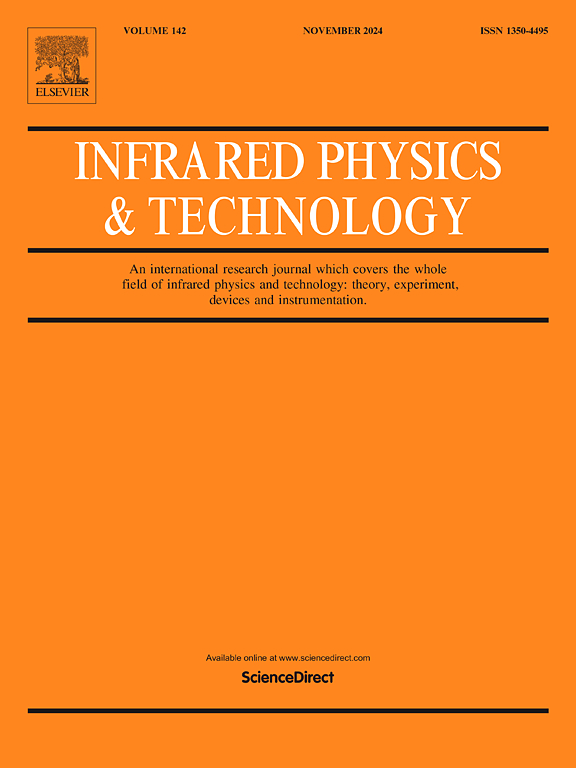基于阿基米德优化算法和遗传算法与比顿滤波器混合算法的光谱-空间高光谱图像分类法
IF 3.1
3区 物理与天体物理
Q2 INSTRUMENTS & INSTRUMENTATION
引用次数: 0
摘要
高光谱成像(HSI)因其能够捕获物体物理和化学性质的详细光谱信息而被广泛应用。然而,HSI数据的高维性带来了挑战,包括冗余、噪声和高度相关的光谱带,这可能会降低分类性能。有效的特征选择对于缓解这些问题至关重要,通过保留信息量最大的波段来解决休斯现象。元启发式优化技术在波段选择中得到了广泛的应用,但常面临过早收敛和局部最优困陷等问题。为了克服这些挑战,本研究提出了一种将阿基米德优化算法(AOA)与遗传算法(GA)相结合的混合优化方法AOA-GA。这种混合方法实现了卓越的勘探开发平衡,实现了高效的全局优化,降低了局部最优的风险。此外,在使用Bitonic Filter进行分类时,将空间特征纳入其中,从而提高了整体准确性。采用随机森林和支持向量机两种分类器对三个基准高光谱数据集(Indian Pines、Pavia University和Salinas)进行了评估。实验结果表明,AOA-GA显著优于最先进的方法,在不同的HSI数据集上展示了其鲁棒性、效率和卓越的分类性能。本文章由计算机程序翻译,如有差异,请以英文原文为准。
Spectral-Spatial hyperspectral image classification based on hybrid of archimedes optimization algorithm and genetic algorithm with bitonic filter
Hyperspectral imaging (HSI) is widely utilized for its ability to capture detailed spectral information about objects’ physical and chemical properties. However, the high dimensionality of HSI data introduces challenges, including redundant, noisy, and highly correlated spectral bands, which can degrade classification performance. Effective feature selection is essential to mitigate these issues and address the Hughes phenomenon by retaining only the most informative bands. Metaheuristic optimization techniques have been widely applied for band selection, but they often face limitations such as premature convergence and local optima entrapment. To overcome these challenges, this study proposes a hybrid optimization method, AOA-GA, which integrates the Archimedes Optimization Algorithm (AOA) with the Genetic Algorithm (GA). This hybrid approach achieves a superior exploration–exploitation balance, enabling efficient global optimization and reducing the risk of local optima. Additionally, spatial features are incorporated during classification using the Bitonic Filter, enhancing overall accuracy. The proposed method is evaluated using two classifiers, Random Forest and Support Vector Machine, on three benchmark hyperspectral datasets: Indian Pines, Pavia University, and Salinas. Experimental results demonstrate that AOA-GA significantly outperforms state-of-the-art methods, showcasing its robustness, efficiency, and superior classification performance across diverse HSI datasets.
求助全文
通过发布文献求助,成功后即可免费获取论文全文。
去求助
来源期刊
CiteScore
5.70
自引率
12.10%
发文量
400
审稿时长
67 days
期刊介绍:
The Journal covers the entire field of infrared physics and technology: theory, experiment, application, devices and instrumentation. Infrared'' is defined as covering the near, mid and far infrared (terahertz) regions from 0.75um (750nm) to 1mm (300GHz.) Submissions in the 300GHz to 100GHz region may be accepted at the editors discretion if their content is relevant to shorter wavelengths. Submissions must be primarily concerned with and directly relevant to this spectral region.
Its core topics can be summarized as the generation, propagation and detection, of infrared radiation; the associated optics, materials and devices; and its use in all fields of science, industry, engineering and medicine.
Infrared techniques occur in many different fields, notably spectroscopy and interferometry; material characterization and processing; atmospheric physics, astronomy and space research. Scientific aspects include lasers, quantum optics, quantum electronics, image processing and semiconductor physics. Some important applications are medical diagnostics and treatment, industrial inspection and environmental monitoring.

 求助内容:
求助内容: 应助结果提醒方式:
应助结果提醒方式:


